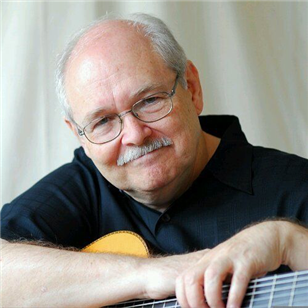Guitar by Randy Buckner
John Knowles: Part One - Getting the Call
Friday, September 6, 2019 by Randy Buckner | Method Books
"That's the closest I ever came to hyperventilating." This was John Knowles' reaction when Jim Crockett asked him to write a book with Chet Atkins.
The 1975 book, "Chet Atkins Note-for-Note," was Knowles' first book published on a national scale, garnering world-wide attention for the guitar teacher from Texas.
Over the next few blog posts, Knowles will tell how the book came about, what he learned from the process, and his reflections of the book 40 years later.
Bio
John Knowles began playing the ukulele 60 years ago, but switched to the guitar after hearing a recording of Chet Atkins. Since then, Knowles has worked with Atkins, Jerry Reed, Lenny Breau, Tommy Emmanuel, and many other renowned musicians.
In 1974, Knowles' arrangement of "The Entertainer" earned Atkins a Grammy. He publishes John Knowles' Fingerstyle Quarterly, a magazine that provides guitarists around the world an opportunity to learn advanced fingerstyle arrangements from Knowles himself.
In 1968 he received a PhD in physics from Texas Christian University. In 1996, Atkins awarded Knowles the honorary title of "CGP." He has twice been inducted into the National Thumbpickers Hall of Fame.
Writing the Book
The Beginning
In the early 1970s, Knowles mailed Atkins an arrangement of "The Entertainer" after the two met in Dallas. In 1974, Knowles attended the NAMM show and met Jim Crockett, the editor of Guitar Player Magazine.
Later, Knowles received a call from Crockett. During the seven-minute conversation, Crockett told him Atkins had recorded "The Entertainer." He wanted Knowles to call Atkins and ask if he was interested in recording an album of movie themes, accompanied by a book published by Guitar Player. And, would Knowles write the book? That...was his "hyperventilating" moment.
Knowles recalled, "So I called Chet, [who] in his very calm way...laid out what he had in mind." They started by discussing song titles.
Then Knowles "got busy working on arrangements to send [Atkins]. Four ended up on the record - "Chet Atkins Goes to the Movies" - and in the book.
Before sending his arrangements to Atkins, Knowles wrote them out in pencil, to be tweaked after they were recorded. When Atkins finished recording the album, he sent Knowles a "proof" - an acetate disc of the album. Knowles listened to the album, and changed what he had penciled in to match Atkins' performances. He then transcribed the other songs on the album.
Transcribing Mr. Guitar
Knowles' process was simple. As he says, "I listened over and over, until I could slow it [the song] down in my head."
What he was listening for were "pitch clues," sounds telling Knowles on what part of the neck Atkins was playing, was there an open string in the middle of a phrase, etc.
About the process, Knowles said, "When I was learning this stuff, I wasn't trying to play [the song], I was trying to write it down." If he wasn't sure about two bars of the song, Knowles would "flag it as the tough part and move on."
After listening to the tough part, sleeping on it, and thinking about it, Knowles would then learn it at tempo, sit still, wait for it to come up on the recording, and then play along with Atkins.
Knowles was listening for musical inflections, articulations, and the sustain of notes. In his words, he "was test driving a couple of bars." There was no other way to transcribe the songs, because computer programs that allow you to slow the music down had not yet been invented.
Two Parts
As Knowles transcribed Atkins' songs, he heard two parts in the music. Knowles reasoned the best way to write down Atkins' music "was to give each part its own rhythmic continuity."
To show the polyphonic nature of Atkins' music, he borrowed the "stem up/stem down" notation learned from classical guitar music. For example, Andres Segovia's transcriptions.
By treating Atkins' music as if he were working with Segovia, Knowles feels it was "one of the things that hooked [Atkins] a little bit" into working with him on the project.
Randy Buckner.
Hoover Music Co.
Springfield, Mo.
www.bucknerguitar.us


